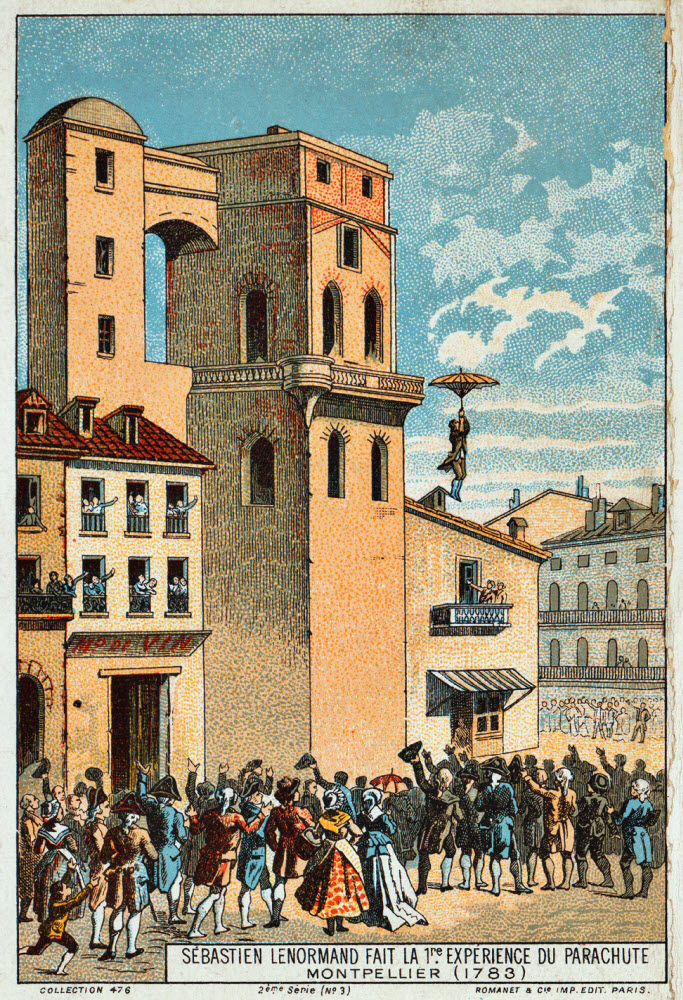They were about to witness the worlds first successful jump in a parachute.
The observatory was housed inside a tall mediaeval tower known as Tour de la Babotte.
It is one of only two towers that survive from a time when Montpellier was encircled by ramparts.

But that December afternoon, the tower was being used for an entirely earthly purpose.
Louis-Sebastien Lenormand, the son of a clockmaker, was about to make a demonstration.
His rig consisted of two umbrellas attached together to a rigid wooden frame.

Lenormand had been practicing the jump for quite sometime from a lesser heightthe upper branches of an elm tree.
He also tested his apparatus with animals, before he was confident enough to try it on himself.
On the appointed day, Lenormand appeared at the top of the tower.

He waved briefly at the gathering crowd that was growing eager by the minute.
On a cue, he grabbed the handle of his gigantic umbrella and jumped.
The earliest account of parachutes were fictional.

“Homo Volans”, an illustration by Faust Vrancic, depicting an early parachute of his own design.
Improvements in the parachutes design progressed rapidly since Lenormands demonstration.
In 1793, Blanchard had the opportunity to test the trustworthiness of the parachute himself when his balloon ruptured.

Blanchard also began making collapsible parachutes from folded silk instead of linen stretched over a wooden frame.
In 1797, Andre Garnerin made the first descent of a frameless parachute covered in silk.
The place he landed is now marked with a plaque.
Garnerin releases the balloon and descends with the help of a parachute, 1797.
Schematic depiction of Garnerin’s first parachute used in the Parc Monceau descent of 22 October, 1797.
Static line parachutes are still used by paratroops today.